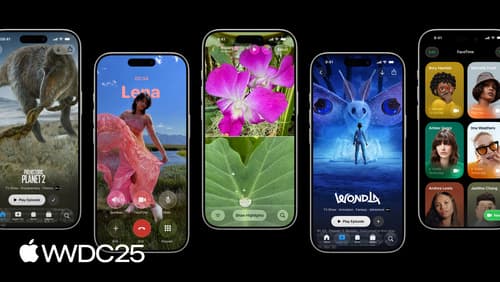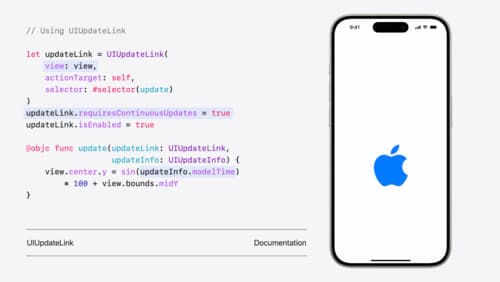how to get callback from tabBarMinimizeBehavior
Asked on 2025-08-22
1 search
To get a callback from tabBarMinimizeBehavior, you can use the Tab Bar Minimize Behavior modifier in SwiftUI or set the top bar minimize behavior in UIKit. This allows the tab bar to minimize on scroll and re-expand when scrolling in the opposite direction.
In SwiftUI, you can adopt this behavior by using the Tab Bar Minimize Behavior modifier. For example, in the TV app, the onscroll down behavior is used, which causes the tab bar to re-expand when scrolling in the opposite direction. You can also place a view above the bar with the Tab View Bottom accessory modifier to take advantage of the extra space provided by the tab bar's collapsing behavior.
In UIKit, you can configure the top bar to minimize on scroll by setting the top bar minimize behavior to the desired direction. For instance, the TV app sets it to onscroll down, and the tab bar re-expands when scrolling in the opposite direction. You can also create a UITab accessory with your content view and set the bottom accessory property on UITabbar controller to display an accessory view above the tab bar.
For more detailed implementation, you can refer to the sessions:

Build a SwiftUI app with the new design
Explore the ways Liquid Glass transforms the look and feel of your app. Discover how this stunning new material enhances toolbars, controls, and app structures across platforms, providing delightful interactions and seamlessly integrating your app with the system. Learn how to adopt new APIs that can help you make the most of Liquid Glass.

Build a UIKit app with the new design
Update your UIKit app to take full advantage of the new design system. We’ll dive into key changes to tab views, split views, bars, presentations, search, and controls, and show you how to use Liquid Glass in your custom UI. To get the most out of this video, we recommend first watching “Get to know the new design system” for general design guidance.

What’s new in UIKit
Explore everything new in UIKit, including tab and document launch experiences, transitions, and text and input changes. We’ll also discuss better-than-ever interoperability between UIKit and SwiftUI animations and gestures, as well as general improvements throughout UIKit.
